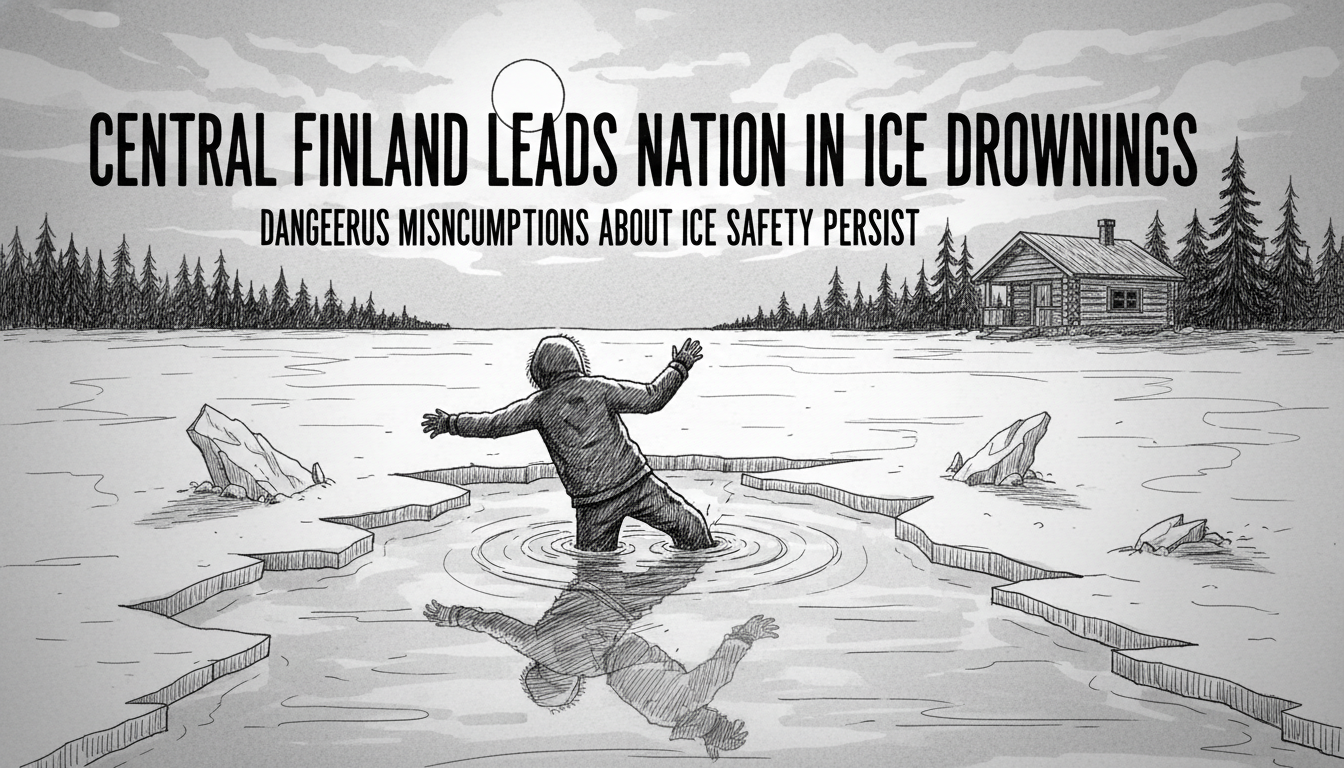Central Finland has recorded more ice-related drownings and near-miss incidents this winter than any other region in the country. Rescue officials report that many accidents occurred in the Jyväskylä area during the challenging spring ice conditions.
Teemu Valkonen, a Central Finland rescuer and ice safety instructor, explained the situation. He works as a trainer for the Finnish Swimming Instruction and Life Saving Federation and serves as an ice safety ambassador. Valkonen guides people on safe movement on ice surfaces.
This week, Valkonen taught proper ice rescue techniques at Jyväskylä's AaltoAlvari alongside water safety expert Anne Hiltunen. Their training sessions addressed persistent misconceptions about ice safety that continue to put lives at risk.
Ice rescue techniques remain widely misunderstood among the Finnish public. Many people hold dangerous assumptions about ice thickness and rescue methods that contradict official safety recommendations.
Finland's lake-rich landscape creates unique winter hazards. The country has approximately 188,000 lakes, with Central Finland containing some of the most extensive freshwater networks. This geography naturally leads to more ice-related activities and corresponding risks.
Winter ice safety has become increasingly important as climate change creates more unpredictable ice conditions. Warmer winters produce unstable ice that appears solid but cannot support weight. This creates hidden dangers for winter sports enthusiasts and casual walkers alike.
Local authorities have intensified ice safety education following the spike in incidents. They emphasize that no ice should ever be considered completely safe, especially during spring thaw periods. Proper safety equipment like ice picks and life jackets can mean the difference between life and death.
The Finnish rescue services respond to approximately 50-70 ice-related emergencies annually. Most victims are men engaged in winter fishing or recreational activities. Alcohol consumption frequently contributes to these dangerous situations.
International readers should understand that Nordic winters present unique challenges. What appears as solid frozen landscape often conceals deadly hazards beneath thin ice surfaces. Visitors to Finland during winter months should always consult local authorities about current ice conditions before venturing onto frozen waterways.
Ice safety education begins in Finnish schools, but many adults maintain outdated beliefs about rescue techniques. The persistence of these misconceptions demonstrates the need for ongoing public awareness campaigns, particularly in regions with high lake density like Central Finland.

